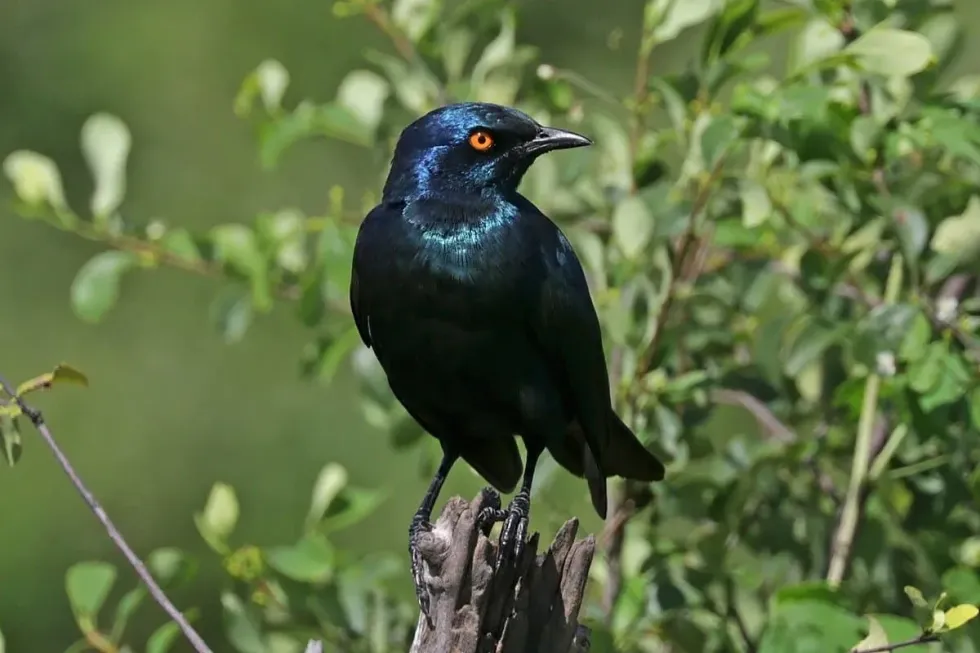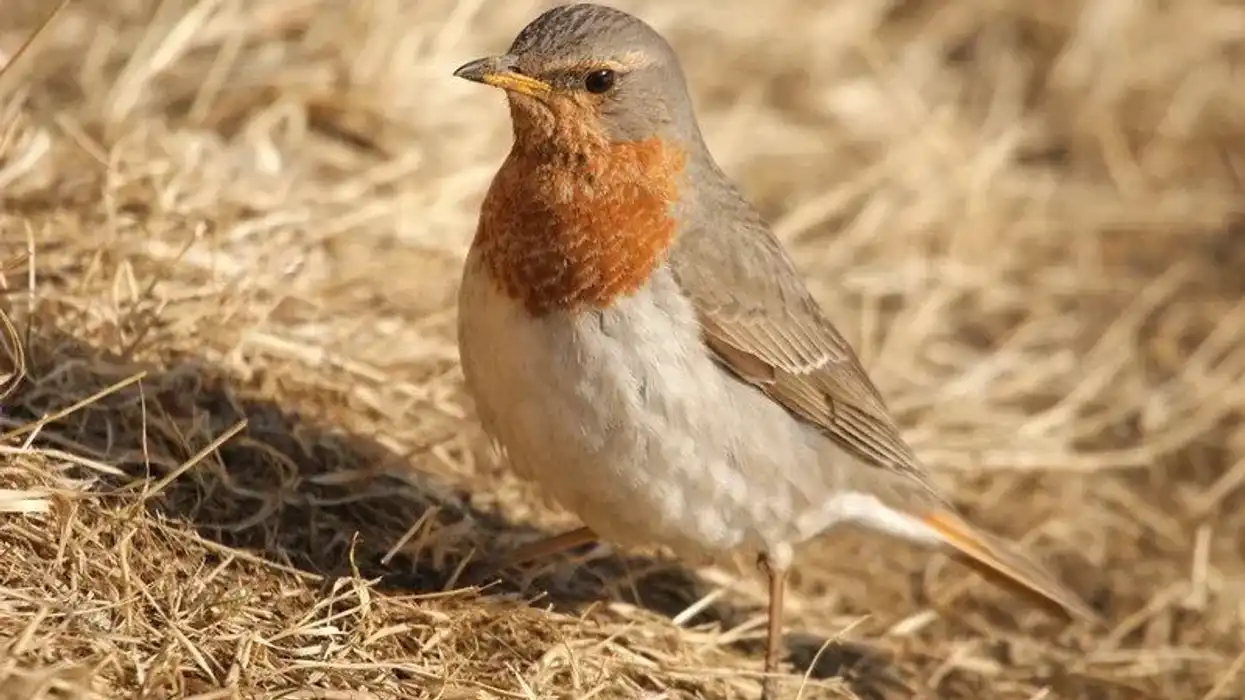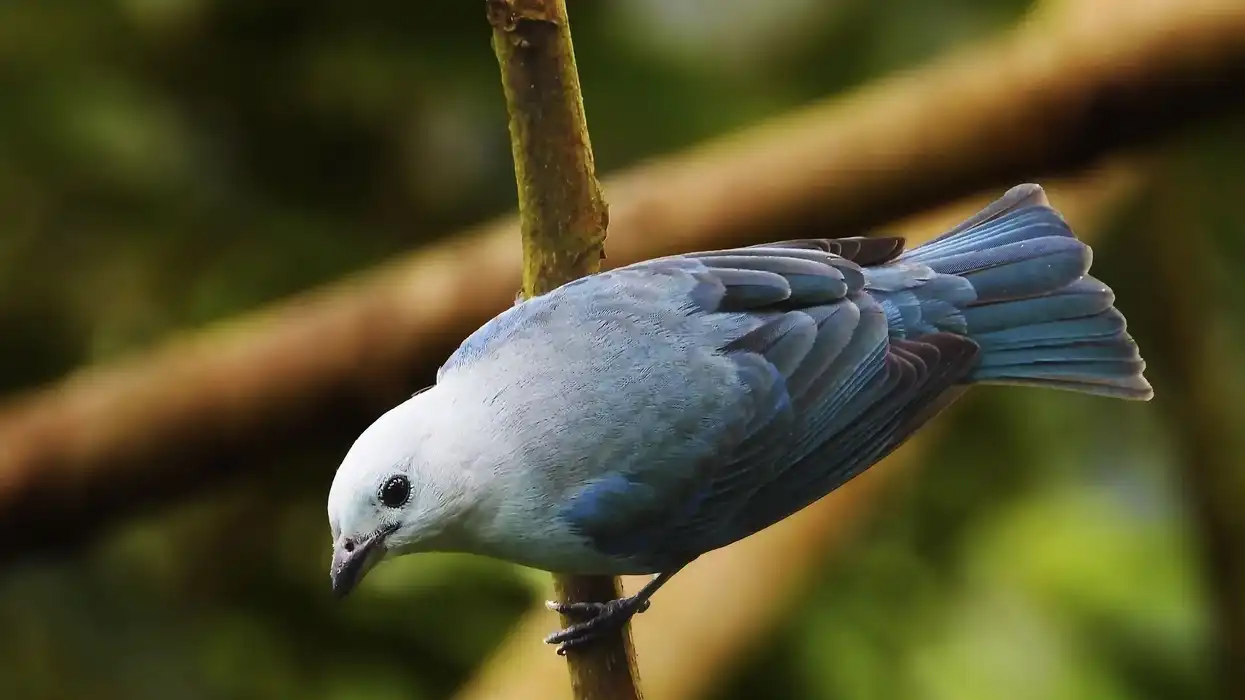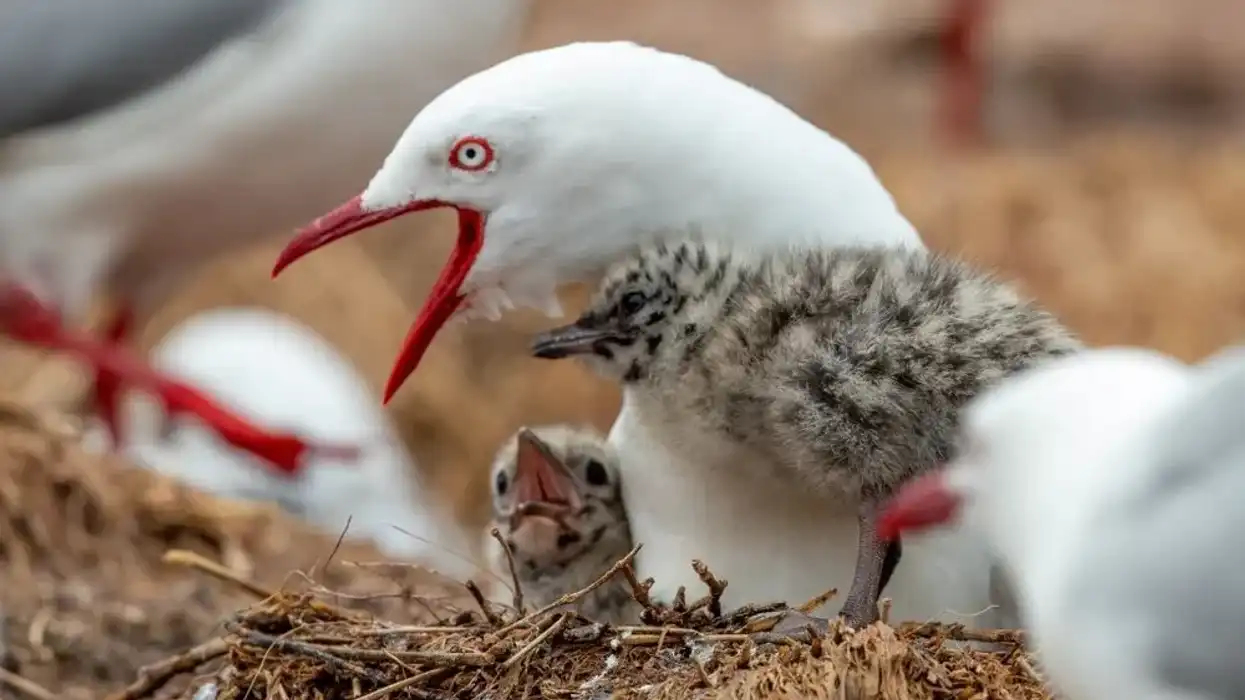The widespread bird with its most unique manifestation, the greater blue-eared starling also dubbed as the greater blue-eared glossy starling, inhabits the territories of Africa. Recognized for its exotic plumage this species is branched into four subspecies based on the region in which they can be observed.
Starlings are passerine birds endemic to Africa, Europe, and Asia. They are often confused with the lesser blue-eared starling (Lamprotornis chloropterus), however, the greater blue-eared starlings are bigger and do not have a bill as fine as the lesser blue-eared starling.
Also, their ear patch is bigger and they prefer a different habitat.
The size of the bird may vary according to their distribution as the birds present in the southward territories are smaller than those in the north. The greater blue-eared starling builds their nest in hollows of the tree and survives on a variety of fruits and insects.
To know more about this species of bird keep reading this article as more interesting facts about the greater blue-eared starlings are stated below. For more relatable content, check out these violet-backed starling facts and metallic starling facts for kids.
Greater Blue-Eared Starling Interesting Facts
What type of animal is a greater blue-eared starling?
The greater blue-eared starling (Lamprotornis chalybaeus) which can also be dubbed as greater blue-eared glossy starling is a unique starling bird species that has four other subspecies L. c chalybaeus, L. c nordmanni, L. cyaniventris, L. c scyobius.
What class of animal does a greater blue-eared starling belong to?
The greater blue-eared starling (Lamprotornis chalybaeus) belongs to the class Aves, order Passeriformes, family Sturnidae, and genus Lamprotornis.
How many greater blue-eared starlings are there in the world?
The greater blue-eared glossy starling is not a threatened species and they are found in superabundance all across its habitat. There are over 32,000 birds in the Kruger National Park of South Africa, over 100,000 in southern Mozambique, and over 10,000 in central Mozambique.
Where does a greater blue-eared starling live?
The geographical distribution of the greater blue-eared starling (Lamprotornis chalybaeus) stretches across the African continent that comprises Ethiopia, eastern Senegal, Angola, eastern Africa, and the northeast region of South Africa.
The species Lamprotornis chalybaeus has four distinct subspecies Lamprotornis chalybaeus chalybaeus can be observed in the regions of the Sahel, the transition area between Sahara and Sudanian savanna.
The Lamprotornis chalybaeus cyaniventris inhabits the northern part of Africa; the Lamprotornis chalybaeus nordmanni in southern and the Lamprotornis chalybaeus scyobius in the central and eastern territories of Africa.
The greater blue-eared starling (Lamprotornis chalybaeus) is a migratory bird and the mating season is followed by a migration when the greater blue-eared starling that inhabits the northwestern part migrate towards the regions of Nigeria, north Cameroon, Ghana, Togo, and Burkina Faso.
What is a greater blue-eared starling's habitat?
The distribution habitat of the greater blue-eared starling (Lamprotornis chalybaeus) covers a vast area. Regardless, this species of bird can be observed in the dry woodlands of the savanna.
Being extremely adaptable the greater blue-eared starling can be observed in the riparian areas where grassland, marshes, forests, swamps are in abundance. A large portion of this bird can be seen in the sub-Sahara area particularly from south of Mauritania and Senegal to Ethiopia. Their dwellings can also be spotted in the south of Angola and northern Namibia.
Who do greater blue-eared starlings live with?
The greater blue-eared starling (Lamprotornis chalybaeus) is an extremely social bird species, they roost in massive flocks and can get mixed along with the other species of starlings. They may roost on the beds of reed, trees, and bushes. The flocks contain a large number of birds and they sing often in the chorus which can be noisy.
How long does a greater blue-eared starling live?
The average lifespan of the greater blue-eared starling (Lamprotornis chalybaeus) is approximately two to three years.
How do they reproduce?
The mating season depends on the area the greater blue-eared glossy starling dwells. However, the process of reproduction is copulation.
These starlings create their nest in the hollows of the tree which is either made by them or it was already made by some bird. Their possible nesting sites may also include the stick nests of the Threskiornis aethiopicus (sacred ibis) or Ciconia abdimii (Abdim's stork).
The nests may or may not be lined with grasses, leaves, and feathers. The eggs are hatched after a duration of 13-14 days and the incubation is performed by the female bird.
The litter size of the greater blue-eared glossy starling is three to five eggs that are greenish-blue and have spots of brown or purple. The chicks remain in the nest for 23 days and after that, they leave the nest.
What is their conservation status?
According to the International Union for Conservation of Nature (IUCN), the conservation status of this species is of the Least Concern. The greater blue-eared starling (Lamprotornis chalybaeus) is a widespread bird species in South Africa, eastern Africa, and other regions, and identifying it for its extraordinary plumage is a common phenomenon.
The population of this bird is stable in all the parts including the protected areas.
Greater Blue-Eared Starling Fun Facts
What do greater blue-eared starlings look like?
The greater blue-eared starling (Lamprotornis chalybaeus) is a passerine bird species that is medium size and has a body length of 8.3-9.4 in (21-24 cm) and weighs approximately 2.8-3.7 oz (79-106 g).
However, the size of the bird of the southward region of Kenya is comparatively smaller than the birds present in the north, this phenomenon can be due to the division of its subspecies.
Starlings are recognized and easily found for their iridescent plumage and the greater blue-eared glossy starling as their name suggests has glossy blue-green plumage covering its body and a short tail which is extra blue from the remaining feathers covering its body.
The blue glaze on their upper tail has a fainted dark spot towards its tips and blue ear patch. The ventral area of this bird has a deeper shade with purple-blue flanks.
The eyes of greater blue-eared glossy starling can be orange-yellow or sometimes bright yellow and their feet are gray or black.
The greater blue-eared starling (Lamprotornis chalybaeus) can be frequently confused with other species particularly the lesser blue-eared starling, regardless of their aspect but the lesser blue-eared starling is smaller in size and has a narrow face mask.
The plumage of young birds is however not as glossy as the plumage of the adult and also their ventral area is blackish brown.

How cute are they?
The greater blue-eared starling (Lamprotornis chalybaeus) both as a chick and an adult is incredibly cute because of its small size and unique color.
How do they communicate?
A variety of tones, calls, and sounds are employed by the greater blue-eared starling (Lamprotornis chalybaeus) as it is an extremely gregarious bird species.
How big is a greater blue-eared starling?
The greater blue-eared starling (Lamprotornis chalybaeus) has an approximate size of 8.3-9.4 in (21-24 cm) as it is medium-sized. It is slightly bigger than the lesser blue-eared starling and the American tree sparrow but smaller than hooded crow.
How fast can a greater blue-eared starling fly?
The speed of greater blue-eared glossy starling has not been documented but a common starling can fly at a speed of 37–50 mph (60–80 kph).
How much does a greater blue-eared starling weigh?
The approximate weight of the greater blue-eared starling (Lamprotornis chalybaeus) is 2.8-3.7 oz (79-106 g). They are two to three times smaller than a thick-billed parrot.
What are the male and female names of the species?
A male is labeled as cock and a female is labeled as a hen which is common for all the birds, but the male and female name of the greater blue-eared glossy starling is not listed.
What would you call a baby greater blue-eared starling?
The babies of birds are called chicks in general, however, the exact term for the babies of the greater blue-eared starling (Lamprotornis chalybaeus) is not listed.
What do they eat?
The greater blue-eared glossy starling is an omnivore and its primary diet comprises insects and a variety of fruits particularly the fruit of fig trees, toothbrush trees, bush plum trees, sumac trees, natal mahogany, and others. They also eat Orthoptera, Coleoptera, Isoptera, and locusts.
Are they dangerous?
This medium bird species, the greater blue-eared starling (Lamprotornis chalybaeus) is pretty harmless.
Would they make a good pet?
Like lark sparrows, the greater blue-eared glossy starling is a social bird species and prefers living in flocks, they are extremely adaptable to their surroundings and can live freely in the wild. Caging them and keeping them as a pet is not recommended.
Did you know...
The greater blue-eared starling (Lamprotornis chalybaeus) assists in the removal of ectoparasites by perching on the livestock.
What sounds does the greater blue-eared starling make?
When the greater blue-eared starling (Lamprotornis chalybaeus) come together and create flocks they have distinct calls and sounds that can be noisy at times. Their jumbled tunes may include grating croaks, musical warbles.
'Kwee-kwee' is their flight call, 'shwarr' is the call when they are alarmed and the most common is their nasal 'squee-ar' when they want to contact other birds. There are assorted whistle notes, nonetheless, the calls of these birds may vary but they are usually short and quick.
What do starlings symbolize?
Over the years starlings have come to be associated with various symbolisms. In ancient times, the druids held these birds in high regard. Nowadays the bird has come to be associated with family and communal harmony.
Here at Kidadl, we have carefully created lots of interesting family-friendly animal facts for everyone to discover! Learn more about some other birds from our Eurasian tree sparrow interesting facts and great-tailed grackle fun facts pages.
You can even occupy yourself at home by coloring in one of our free printable Greater blue earned starling coloring pages.









